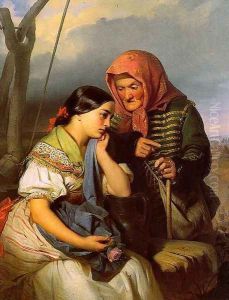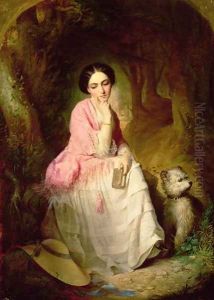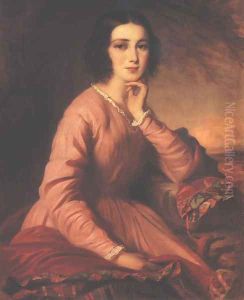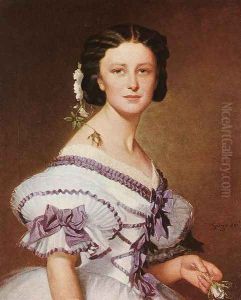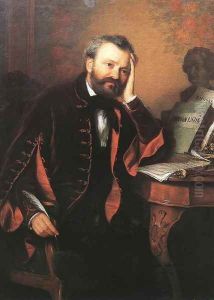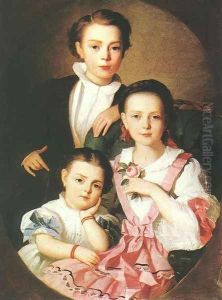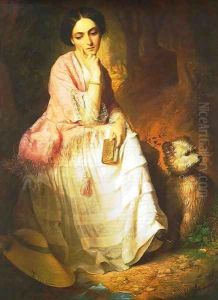Gyorgyi Alajos Giergl Paintings
Györgyi Alajos Giergl was a notable Hungarian painter, born in 1821 in Pest, which is now part of Budapest, Hungary. He was a prominent figure in the Hungarian art scene during the mid-19th century, a period that was crucial for the development of national identity and cultural expression in Hungary. Giergl's work is often associated with the Romantic movement, characterized by its emphasis on emotion, individualism, and a reverence for nature. His paintings frequently depicted historical scenes, landscapes, and portraits, contributing significantly to the visual narrative of Hungarian history and folklore.
Giergl embarked on his artistic journey at a young age, showing a keen interest in painting and drawing. He pursued his passion for art by studying at the Academy of Fine Arts in Vienna, Austria, which was a common path for many Hungarian artists of the time seeking formal education and exposure to the broader European art scene. His education and experiences in Vienna heavily influenced his artistic style, merging classical techniques with the emerging Romantic sensibilities of the era.
Throughout his career, Giergl remained deeply connected to his Hungarian roots, and this connection was reflected in his choice of subjects and themes. He was particularly known for his historical paintings, which often depicted pivotal moments and figures in Hungarian history. These works not only showcased his technical skill and emotional depth as an artist but also played a role in shaping the Hungarian public's understanding and appreciation of their national history.
Despite his early death in 1863 at the age of 42, Giergl left behind a significant body of work that continued to influence Hungarian art and national identity. His paintings are preserved in several museums and collections in Hungary and abroad, serving as a testament to his contribution to the arts. Giergl's legacy is that of a pioneering figure in Hungarian art, whose works continue to inspire and resonate with audiences, reflecting the rich cultural and historical heritage of Hungary.
